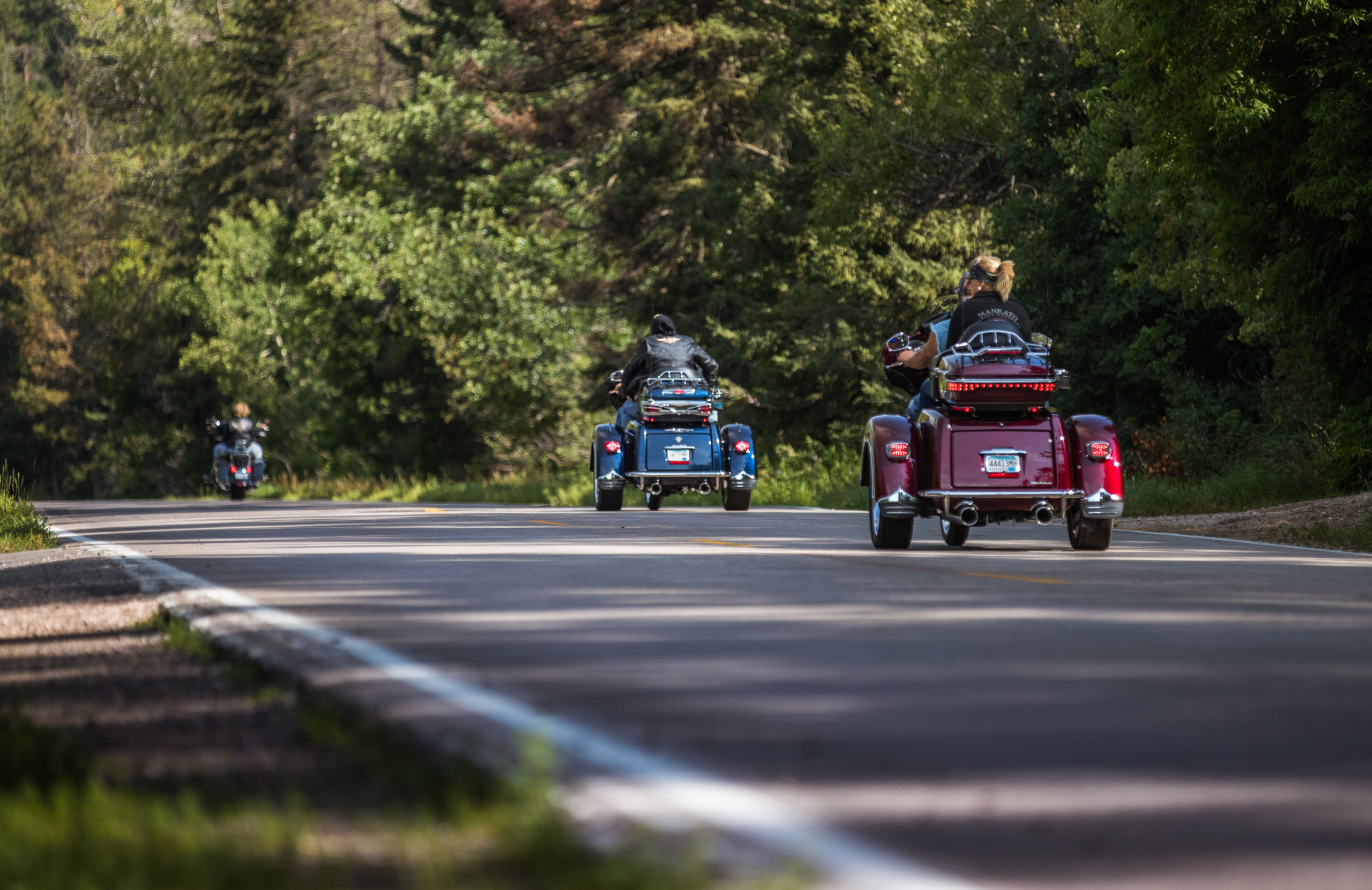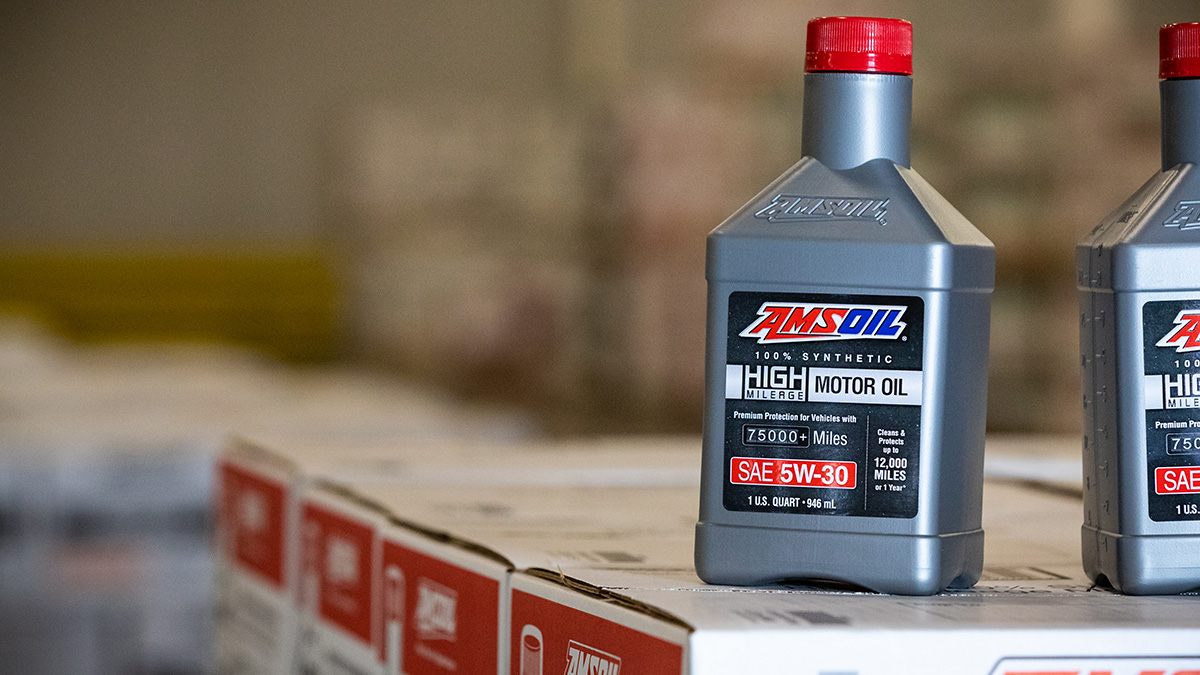Our stable of riding experts, with decades of experience among them, offer their tips to help you go from riding greenhorn to seasoned veteran.
- Start with a bike you can handle
Sure, you want to jump on a big Harley and head for Sturgis. But that’s not the best idea if you’ve never ridden a motorcycle. A big, powerful bike equals a heavy bike, and heavy bikes are tougher to handle and keep upright. “Don’t go big, or for a cool bike, or big displacement or what your partner/friend/husband wants so you keep up when they are riding,” said AMSOIL Trade Show Manager Patricia Stoll, who’s been riding for years. “I’ve seen too many people, especially women sadly, get bikes that are too big for them to handle comfortably.”
If you’ve never ridden, start with a lightweight bike with a small or mid-sized engine. You may even consider an adventure bike like a Honda CRF250L or KTM 350EXC, which can be ridden on- or off-road. You can often find smaller, used bikes pretty cheap online. That way if you dump it, your body and wallet won’t be too badly scarred.
- Take a motorcycle rider safety course
New riders need to meet a variety of state-specific requirements to obtain a motorcycle license. You may also have to pass a motorcycle training course. A few state-specific examples include…
Minnesota: Requires motorcyclists under age 18 to pass an approved Rider Skills Training course.
California: Basic motorcycle training is mandatory for new riders under 21 years old.
New Hampshire: Riders under 18 years old are required to complete a Basic Rider course.
Training courses vary, but you’ll typically complete a combination of classroom work designed to familiarize yourself with the basics of your bike and field work that teaches defensive riding tactics, cornering techniques and other skills. A safety course is a great start to a long, safe riding career.
Find a Motorcycle Safety Course near you.
- Test, test, test
Before you drop potentially several thousand dollars on a new or used bike, test ride as many makes and models as you can. If possible, rent a motorcycle for a few days and put it through its paces. Some dealerships will let you take a bike overnight. Don’t marry yourself to one particular brand. If you’re a Harley loyalist, don’t shy away from testing an Indian, Victory or other brand. You won’t know if another brand stirs your passion unless you give it a try. Be realistic with what you’re going to do with the bike. If you plan to spend most of your time highway riding, be wary of buying a smaller bike designed for city riding, and vice versa, even if the bike wins you over on a test ride.
- Don’t compromise
Once you’ve zeroed in on the bike you want, get it – don’t compromise and get a different bike due to a good factory warranty or other incentive. “I can’t tell you how often I hear people say they regret the first bike they bought,” said Len Groom, AMSOIL Technical Product Manager – Powersports, himself a lifelong rider. “What often happens is a Harley guy, for example, will settle for another brand due to a long warranty or something. Then they immediately regret it, sell the bike in a year or two and just get the bike they wanted all along.” Compromise ruins your love of riding and ends up wasting money.
- Budget for accessories & maintenance
Most motorcycles aren’t cheap, and neither are accessories and maintenance. Don’t blow your whole bankroll on the bike without budgeting for things like a cover (if you don’t have a garage), riding chaps, a helmet, gloves, jacket, saddle bags, chrome, engine modifications and other expenses. Eventually, you’ll need new tires, and oil change, new brakes and other maintenance services. Not planning for these expenses can cost you even more in the long run.
- Don’t skimp on maintenance
Many seasoned riders know their bikes better than themselves. Any unfamiliar sound or sensation sends them to the garage to investigate. They take impeccable care of their bikes, and so should you if you plan to ride it into the sunset.
Change oil, primary fluid and transmission fluid prior to storing the bike for the season. Before storage, it’s best to wait for low-humidity weather. Ride the machine until thoroughly warmed, then change all oils. After the change, take another warm-up ride to ensure all internals are fully wetted with the fresh lubricant. Use high-quality synthetic fluids to fight the intense heat and stress of high-rpm riding common to big V-twins and sport bikes.
“The object is to vaporize and exclude as much water from the engine, primary and transmission case(s) and to coat all internal surfaces with the highly concentrated corrosion inhibitors present in the fresh oil,” said Harley owner and AMSOIL Mechanical Test Development Manager John Skuzinski. “Additionally, pumping fresh lubricant between rubbing and sliding surfaces helps protect parts during the next startup.”
Don’t forget to stabilize the fuel and remove the battery for storage inside for the winter.





Comments
Share: